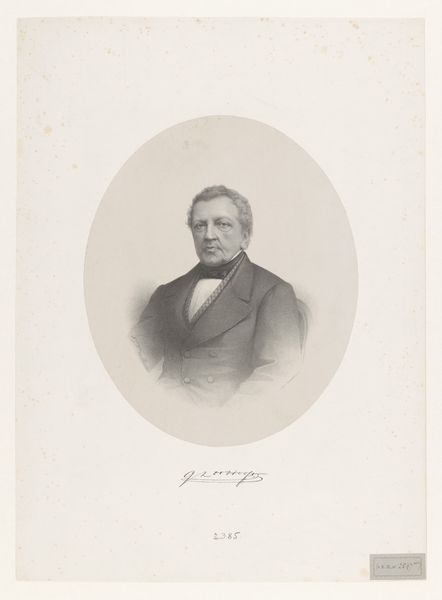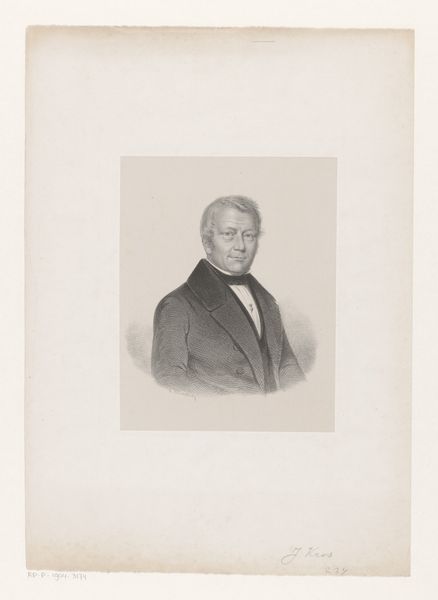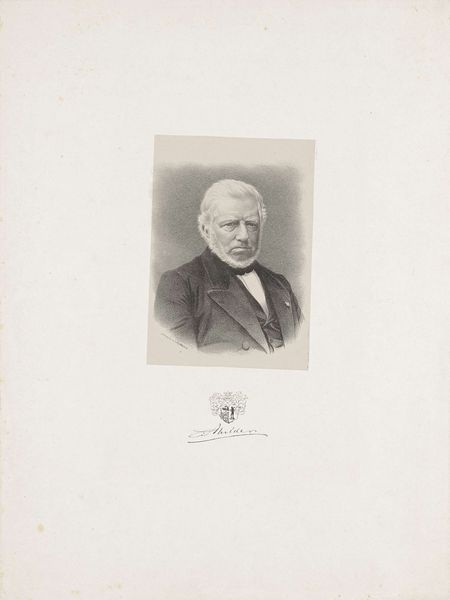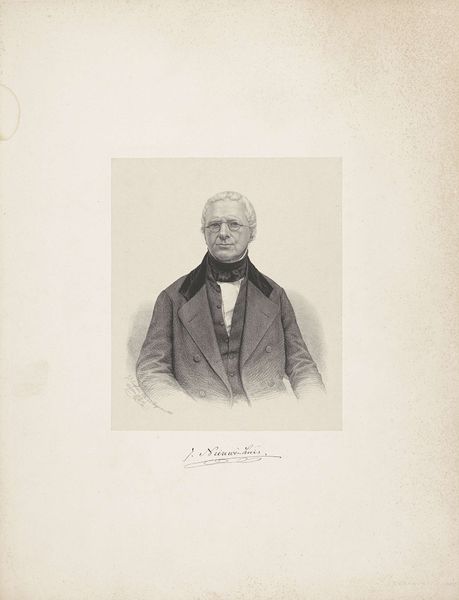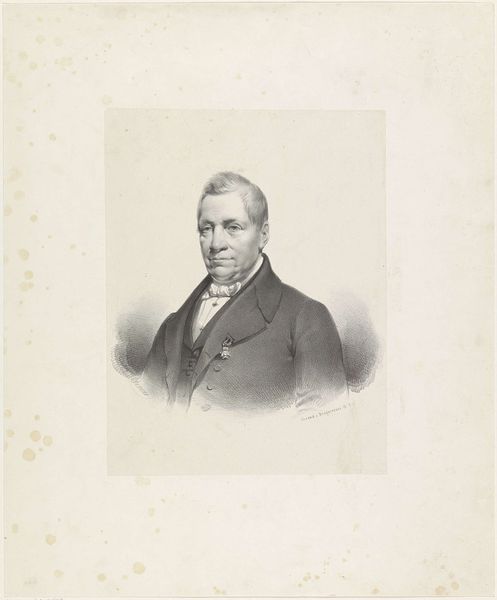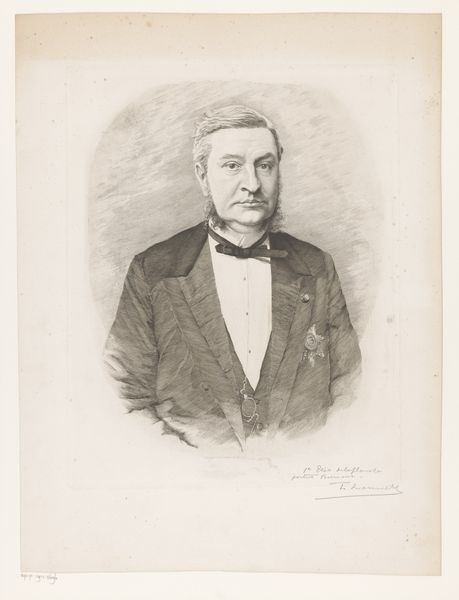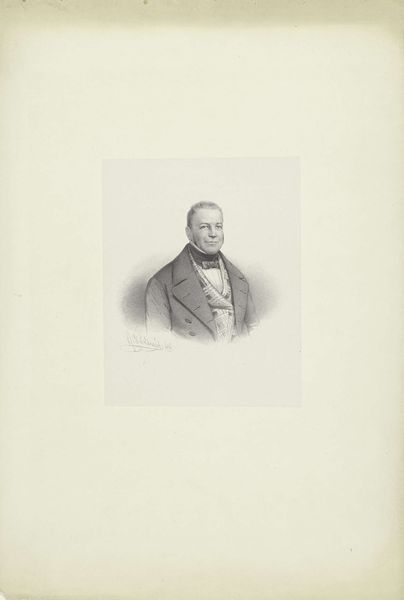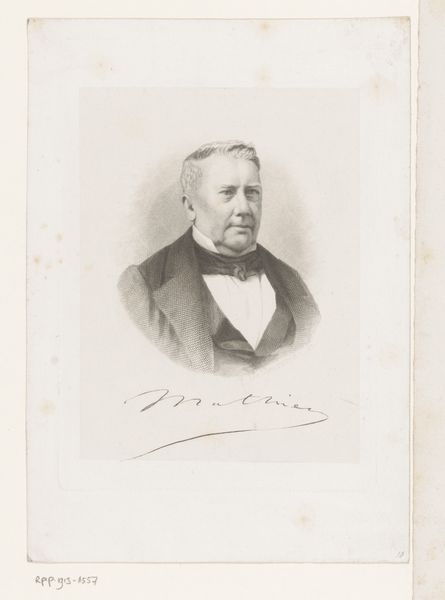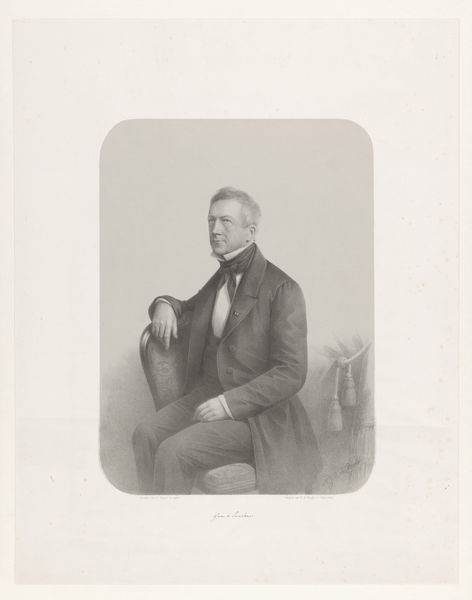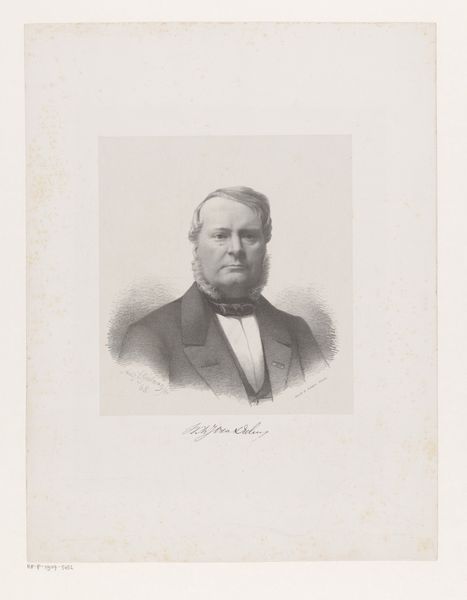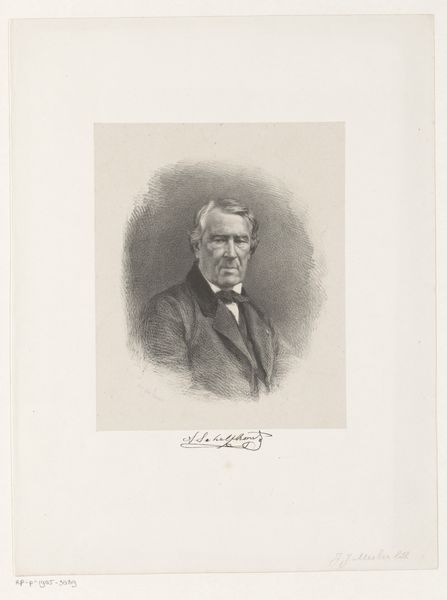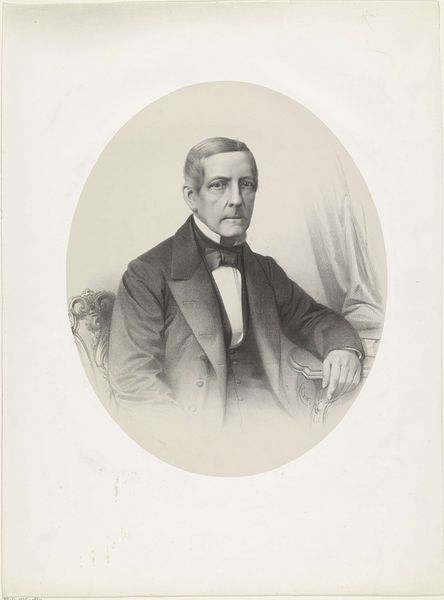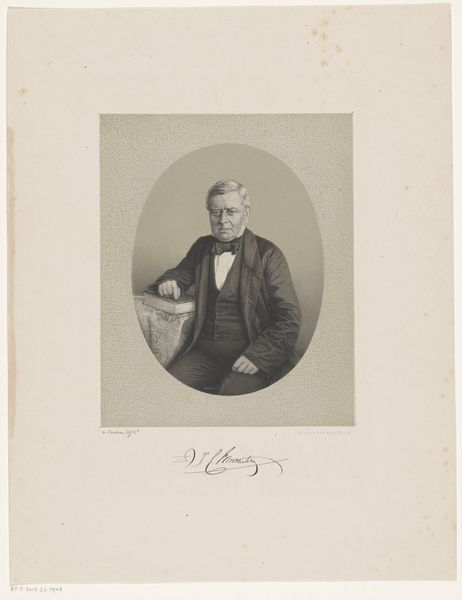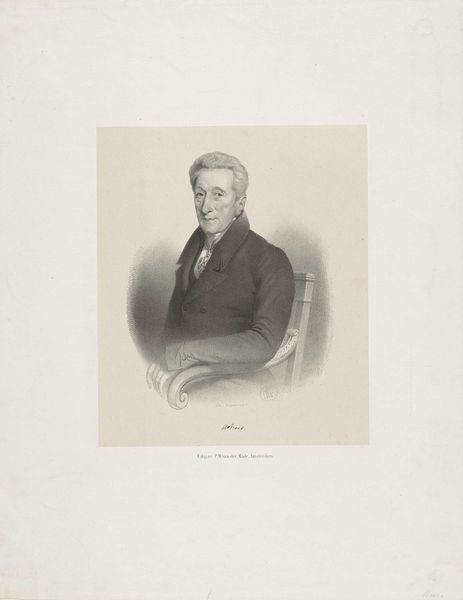
drawing, graphite, engraving
#
portrait
#
pencil drawn
#
drawing
#
pencil drawing
#
graphite
#
portrait drawing
#
academic-art
#
engraving
#
realism
Dimensions: 335 mm (height) x 270 mm (width) (bladmaal)
Editor: Here we have a graphite and engraving artwork, simply titled "O:F. Olsen," created sometime between 1855 and 1935 by Carl Poulsen. It's a striking portrait, and the subject's serious expression makes me wonder about his place in society. What catches your attention in this piece? Curator: The work certainly encapsulates the aspirations of civic portraiture common in that period. The engraving technique, by its very nature, was reproductive. Meaning this portrait served to disseminate an image, but also an idea, about O:F. Olsen's position and importance. Consider the context: how do you think a portrait like this would have circulated, and who would have been its intended audience? Editor: I imagine this kind of portrait would be found in public spaces like libraries or government buildings. Perhaps meant for the educated middle class and upper class who had a vested interest in upholding societal norms? Curator: Precisely. And the chosen medium is no accident. Engravings allowed for mass production, signifying accessibility, though accessibility was still limited. The gaze and formal attire signal authority, inviting viewers to align themselves with established power structures. Would you say the artistic style supports or challenges that intention? Editor: I think it definitely reinforces the intent. The realism—everything from the lines in his face to the detail in his coat—it’s all about projecting an image of steadfastness and authority. Curator: And how do we, today, grapple with that historical use of imagery when we encounter portraits such as these? How can institutions ensure accessibility to everyone? Editor: I guess we have to actively consider who *isn’t* represented, whose stories *aren't* told in these spaces, and then work to include them. This conversation made me realise how portraits, like this one, can tell stories beyond the individual depicted. Curator: Exactly. It encourages us to think critically about the museum's role in presenting potentially outdated values. I learned new perspectives thanks to you.
Comments
No comments
Be the first to comment and join the conversation on the ultimate creative platform.
